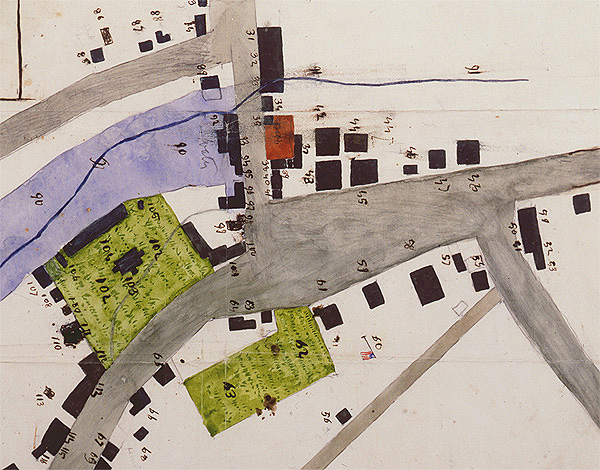

1. Edward Jarvis’s Concord, 1810-1820
The writings of Concord-born physician and social historian Edward Jarvis (1803-1884) take the reader on a guided tour of early nineteenth-century Concord, just before the Concord Mill Dam Company began developing the area. In Houses and People in Concord, 1810 to 1820 (written in 1882), Jarvis recorded from memory his recollections of the town, illustrating them with a detailed, hand-drawn and colored map. An excellent resource for understanding downtown Concord in the nineteenth-century, the map identifies the buildings that stood on the Mill Dam—Main Street and its environs—before the changes implemented by the Mill Dam Company starting in 1826. Prior to this new development, the area was home to not only a grist mill but also a bark house and a tannery. Nearby were a currier’s shop and, a few rods down the road, a slaughter house. A blacksmith’s shop stood on the site of the bank.
Though the Concord Mill Dam Company was a commercial venture intended to bring a profit to its incorporators and stockholders, it also upgraded and improved the appearance and functioning of the town’s center and reflected the changing economy. General stores, artisans’ workshops, a bank, and an insurance company office displaced the gritty operations of the tanner and the currier and drove enterprises like the slaughter house to the outskirts of town.